Abstract
Active immunity and maternally transmitted passive immunity to respiratory syncytial virus (RSV) were studied in cotton rats. Animals infected with respiratory syncytial virus developed complete resistance to pulmonary reinfection, which lasted at least 18 months. Nasal resistance was of shorter duration and began to diminish in 8 months. Pulmonary resistance was transferred by parabiosis, but nasal resistance was not. Adoptive transfer studies with fractionated convalescent blood showed that serum antibody, but not circulating lymphocytes, conferred pulmonary resistance. Immune females conferred antibody to their young prenatally and postnatally, with most of the antibody being transferred via colostrum and milk. Maternally transmitted immunity was more effective in the lungs than in the nose and was transient in both organs. Foster nursing experiments showed colostrum and milk to be the most important routes of immune transfer. Although resistance in infants generally correlated with serum neutralizing antibody levels, several exceptions to this correlation suggested that immune factors other than neutralizing antibody may also play an important role in maternal passive immunity.
Full text
PDF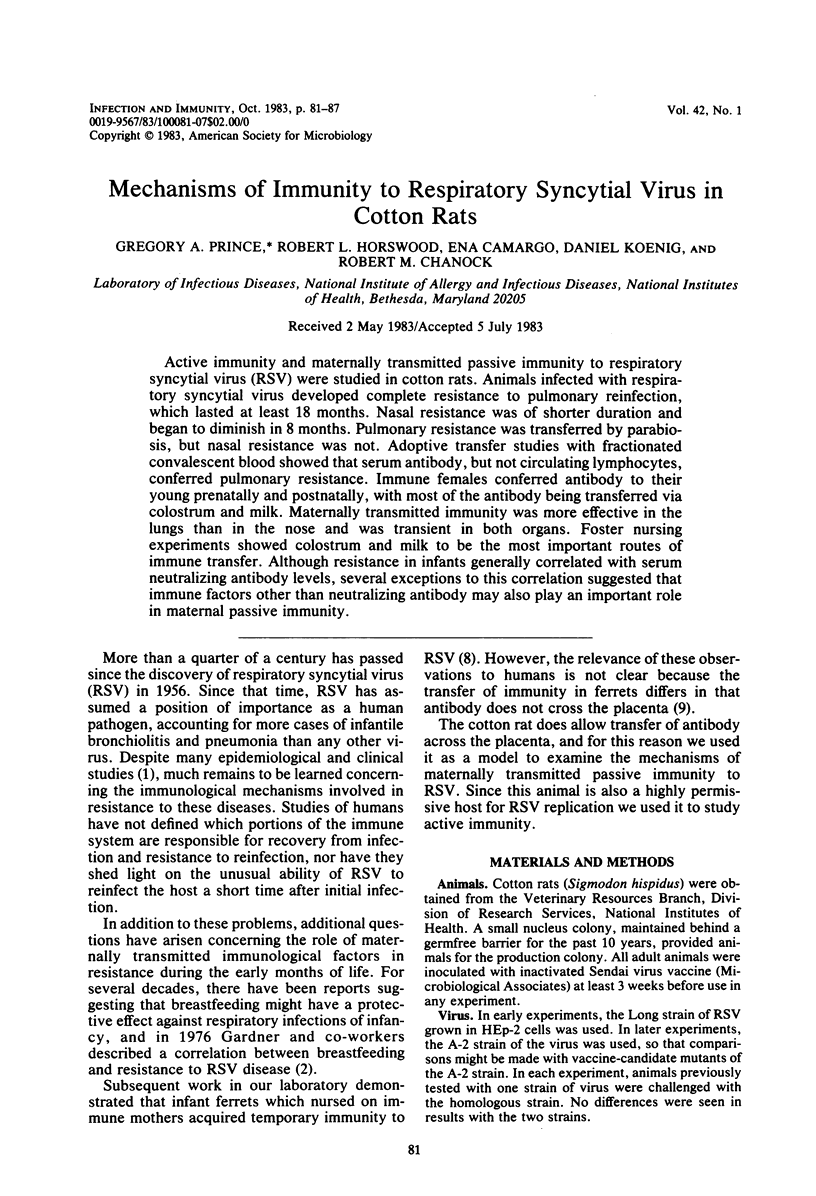
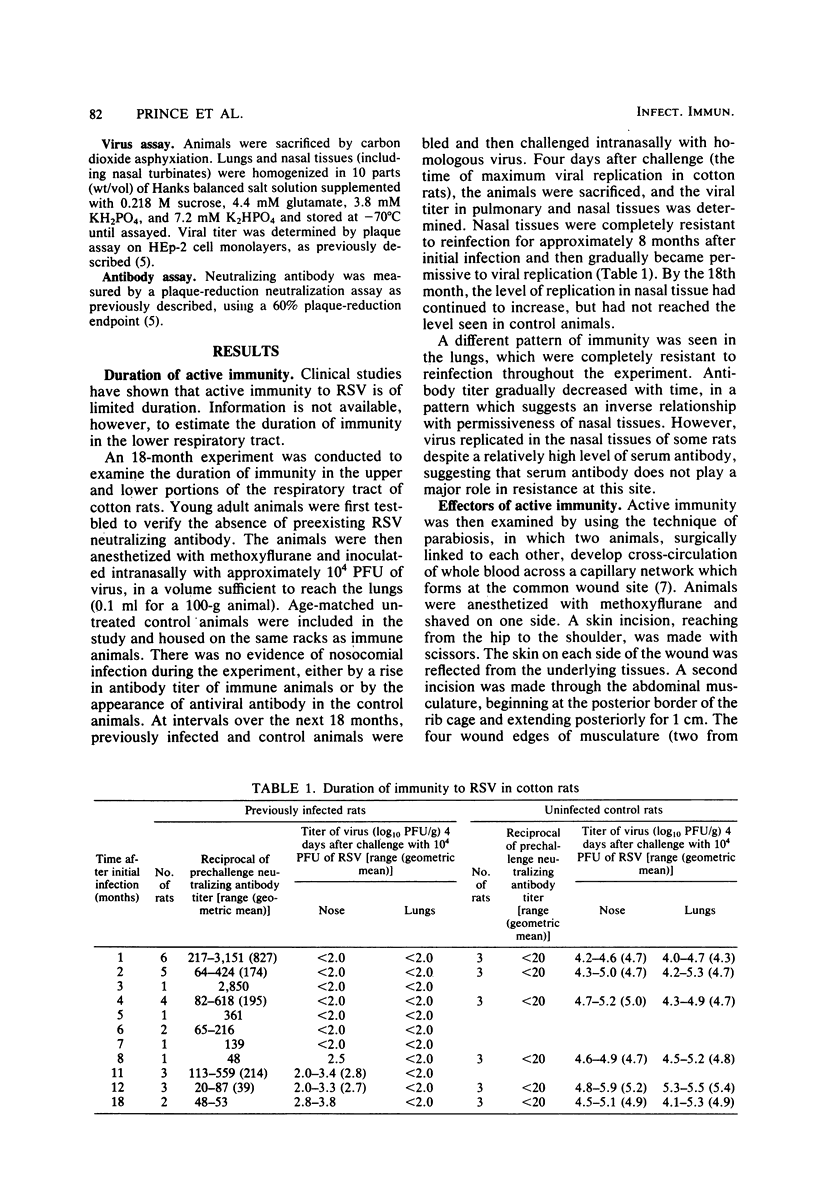
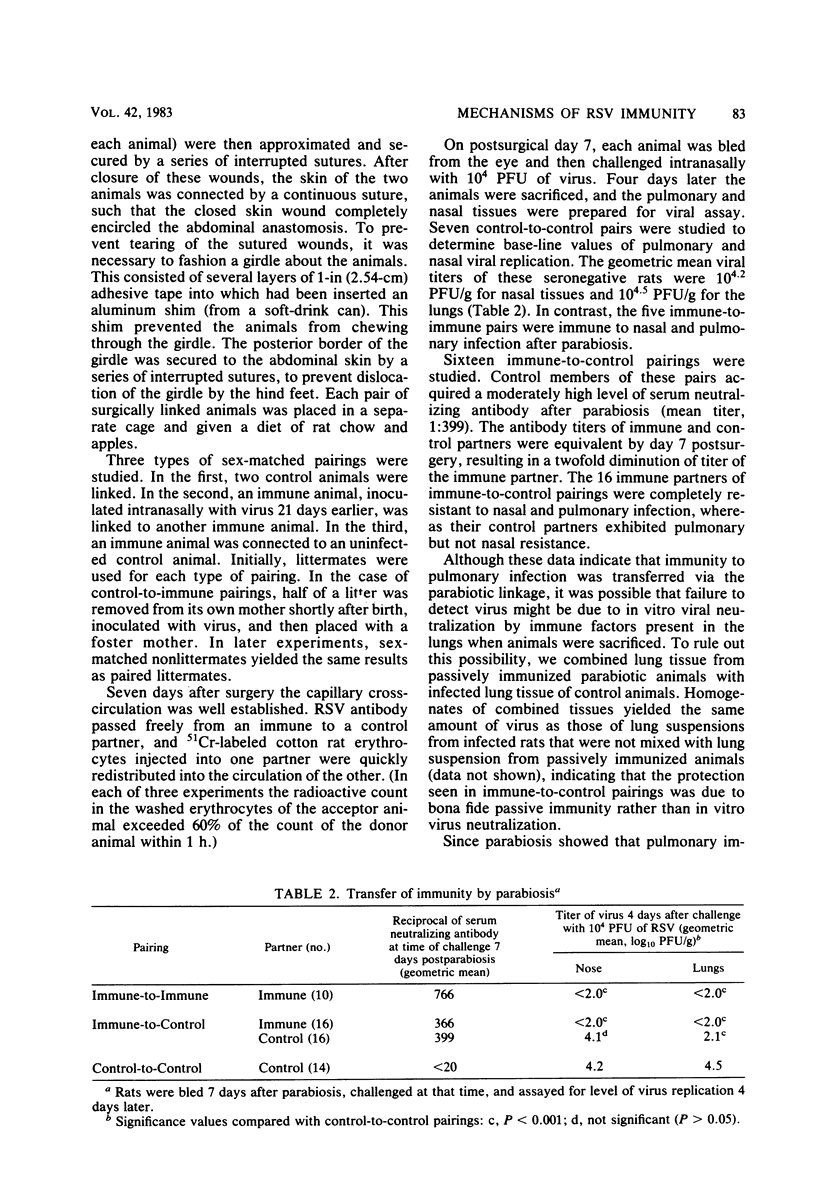
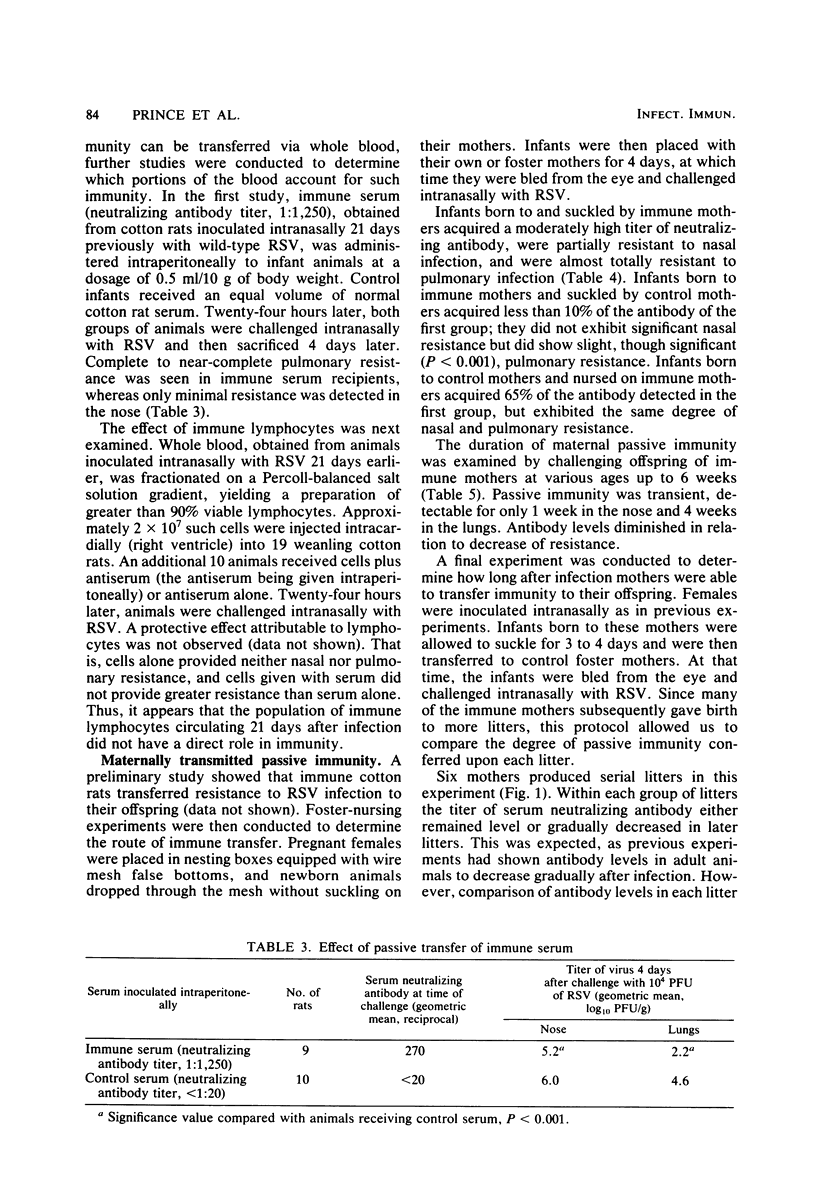
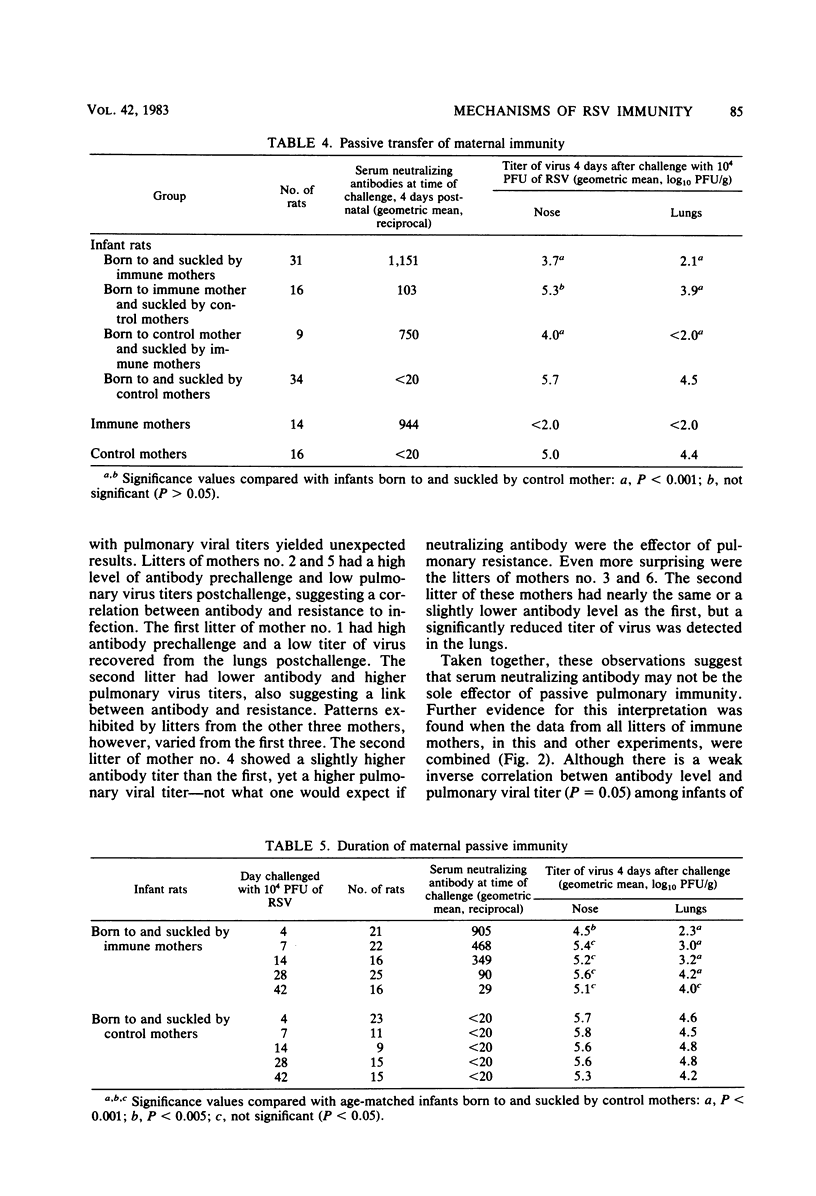
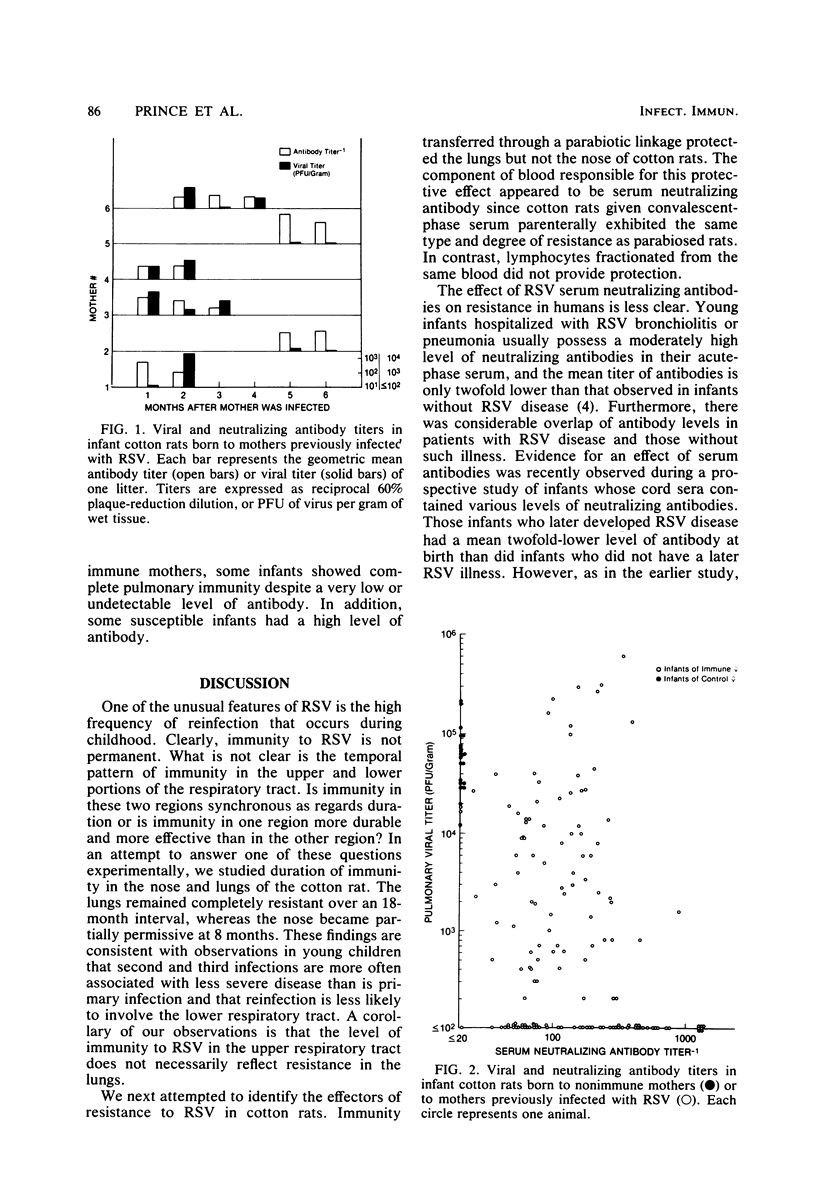
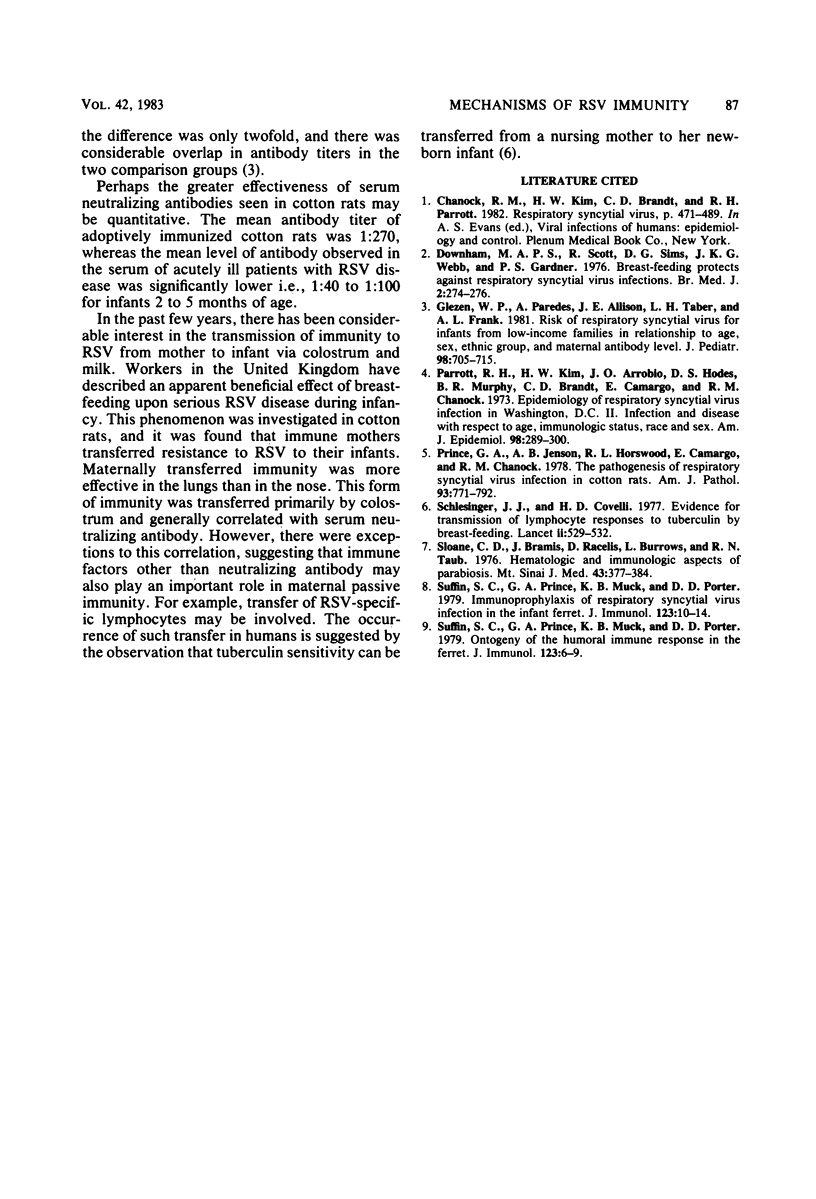
Selected References
These references are in PubMed. This may not be the complete list of references from this article.
- Downham M. A., Scott R., Sims D. G., Webb J. K., Gardner P. S. Breast-feeding protects against respiratory syncytial virus infections. Br Med J. 1976 Jul 31;2(6030):274–276. doi: 10.1136/bmj.2.6030.274. [DOI] [PMC free article] [PubMed] [Google Scholar]
- Glezen W. P., Paredes A., Allison J. E., Taber L. H., Frank A. L. Risk of respiratory syncytial virus infection for infants from low-income families in relationship to age, sex, ethnic group, and maternal antibody level. J Pediatr. 1981 May;98(5):708–715. doi: 10.1016/s0022-3476(81)80829-3. [DOI] [PubMed] [Google Scholar]
- Parrott R. H., Kim H. W., Arrobio J. O., Hodes D. S., Murphy B. R., Brandt C. D., Camargo E., Chanock R. M. Epidemiology of respiratory syncytial virus infection in Washington, D.C. II. Infection and disease with respect to age, immunologic status, race and sex. Am J Epidemiol. 1973 Oct;98(4):289–300. doi: 10.1093/oxfordjournals.aje.a121558. [DOI] [PubMed] [Google Scholar]
- Prince G. A., Jenson A. B., Horswood R. L., Camargo E., Chanock R. M. The pathogenesis of respiratory syncytial virus infection in cotton rats. Am J Pathol. 1978 Dec;93(3):771–791. [PMC free article] [PubMed] [Google Scholar]
- Schlesinger J. J., Covelli H. D. Evidence for transmission of lymphocyte responses to tuberculin by breast-feeding. Lancet. 1977 Sep 10;2(8037):529–532. doi: 10.1016/s0140-6736(77)90665-1. [DOI] [PubMed] [Google Scholar]
- Sloane C. E., Bramis J., Racelis D., Burrows L., Taub R. N. Hematologic and immunologic aspects of parabiosis. Mt Sinai J Med. 1976 Jul-Aug;43(4):377–384. [PubMed] [Google Scholar]
- Suffin S. C., Prince G. A., Muck K. B., Porter D. D. Immunoprophylaxis of respiratory syncytial virus infection in the infant ferret. J Immunol. 1979 Jul;123(1):10–14. [PubMed] [Google Scholar]
- Suffin S. C., Prince G. A., Muck K. B., Porter D. D. Ontogeny of the ferret humoral immune response. J Immunol. 1979 Jul;123(1):6–9. [PubMed] [Google Scholar]


